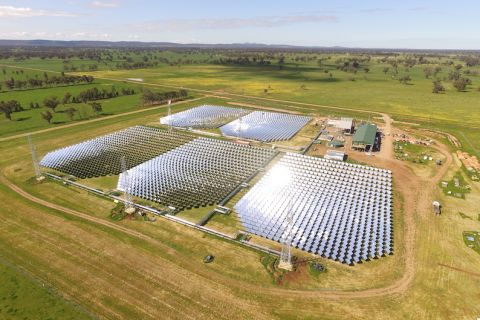LONDON—Ultra-low oil prices and full storage tanks and pipelines will force an unprecedentedly fast decline in U.S. output this year as producers are forced to choke or shut old wells and cut back new drilling.
In normal times, it usually takes an average of four to five months for lower prices to filter through into a reduction in new drilling and nine to 12 months to feed through into a decline in output.
But the current adjustment is likely to be much faster as the industry struggles to cope with the largest economic and price shock since the Great Depression of the 1930s.
Production warfare between Saudi Arabia and Russia, compounded by the enforced shut down of much of the business and transport system as a result of coronavirus, has created an enormous oversupply.
Global oil inventories are estimated to be increasing at the rate of 25 MMbbl/d and storage capacity in pipelines, refineries, tank farms and vessels at sea is rapidly filling up.
Prices for crude due to be produced in the next few weeks and months have plunged as traders become concerned whether there will be enough tankage to store it all until consumption picks up.
Crisis Point
Front-month U.S. futures prices for crude due to be delivered in May are down by two-thirds compared with the same point last year, the fastest year-on-year decline for decades.
After adjusting for inflation, wellhead prices in the fields of West Texas, those actually received by producers, have fallen to their lowest level, or close to it, since before the first oil shock in 1973.
In response, U.S. shale firms have slashed the number of rigs drilling for oil by 59 (9%) in the last two weeks, with 40 idled in the last week alone, the fastest one-week reduction in five years.
More rigs are likely to be idled in the weeks ahead as shale firms cancel drilling contracts and decline to enter new ones to conserve cash.
And completion contracts for casing, fracturing, installing surface gear and hooking up new wells to the gathering system are also set to drop sharply.
The result is that U.S. crude oil output should start to decline significantly within the next three to four months at the outside, and possibly sooner.
If producers are forced to choke back existing wells, and shut-in aging “stripper wells” producing just a few barrels per day, because they are no longer able to cover operating costs, the decline could come even faster.
Boom to Bust
During the last oil price crash, prices started falling in July 2014, the number of rigs drilling turned down in October 2014, but output did not start to fall until May 2015 and was not down year-on-year until December 2015.
There was a delay of four months between prices turning down and drilling slowing; 10 months until production turned lower; and almost 18 months before output was dropping year-on-year.
This time the physical oil shock is an order of magnitude larger and the corresponding adjustment will have to come much faster.
U.S. oil production is likely to turn down by June or July and is likely to be falling year-on-year well before the end of 2020.
In its most recent forecast, after the volume war erupted but before the global economy went into lockdown, the U.S. Energy Information Administration predicted output would be broadly flat through the rest of 2020-2021.
The most recent forecast showed output essentially flat year-on-year in fourth-quarter 2020 and fourth-quarter 2021.
Since then, however, prices have fallen by a further $12/bbl (39%) to levels that are unsustainable for many smaller and higher-cost producers.
If prices remain near current levels for more than a very short period, production will be falling rapidly by the end of 2020 and through 2021.
In the last price slump, U.S. output went from year-on-year growth of 1.5 MMbbl/d in the fourth quarter of 2014 to a decline of 800,000 bbl/d year-on-year by third-quarter 2016.
This time, output was growing at an even more spectacular 2 MMbbl/d year-on-year in the fourth quarter of 2018, but the eventual plunge is set to be even more severe.
Recommended Reading
Energy Transition in Motion (Week of Feb. 2, 2024)
2024-02-02 - Here is a look at some of this week’s renewable energy news, including a utility’s plans to add 3.6 gigawatts of new solar and wind facilities by 2030.
Energy Transition in Motion (Week of Feb. 16, 2024)
2024-02-16 - Here is a look at some of this week’s renewable energy news, including the outlook for solar and battery storage in the U.S.
Equinor, Ørsted/Eversource Land New York Offshore Wind Awards
2024-02-29 - RWE Renewables and National Grid’s Community Offshore Wind 2 project was waitlisted and may be considered for award and contract negotiations later, NYSERDA says.
RWE Boosts US Battery Storage with Three Projects
2024-02-14 - The three projects—two in Texas and one in Arizona—will lift RWE’s total U.S. battery storage capacity to about 512 megawatts.
Could Concentrated Solar Power Be an Energy Storage Gamechanger?
2024-03-27 - Vast Energy CEO Craig Wood shares insight on concentrated solar power and its role in energy storage and green fuels.





